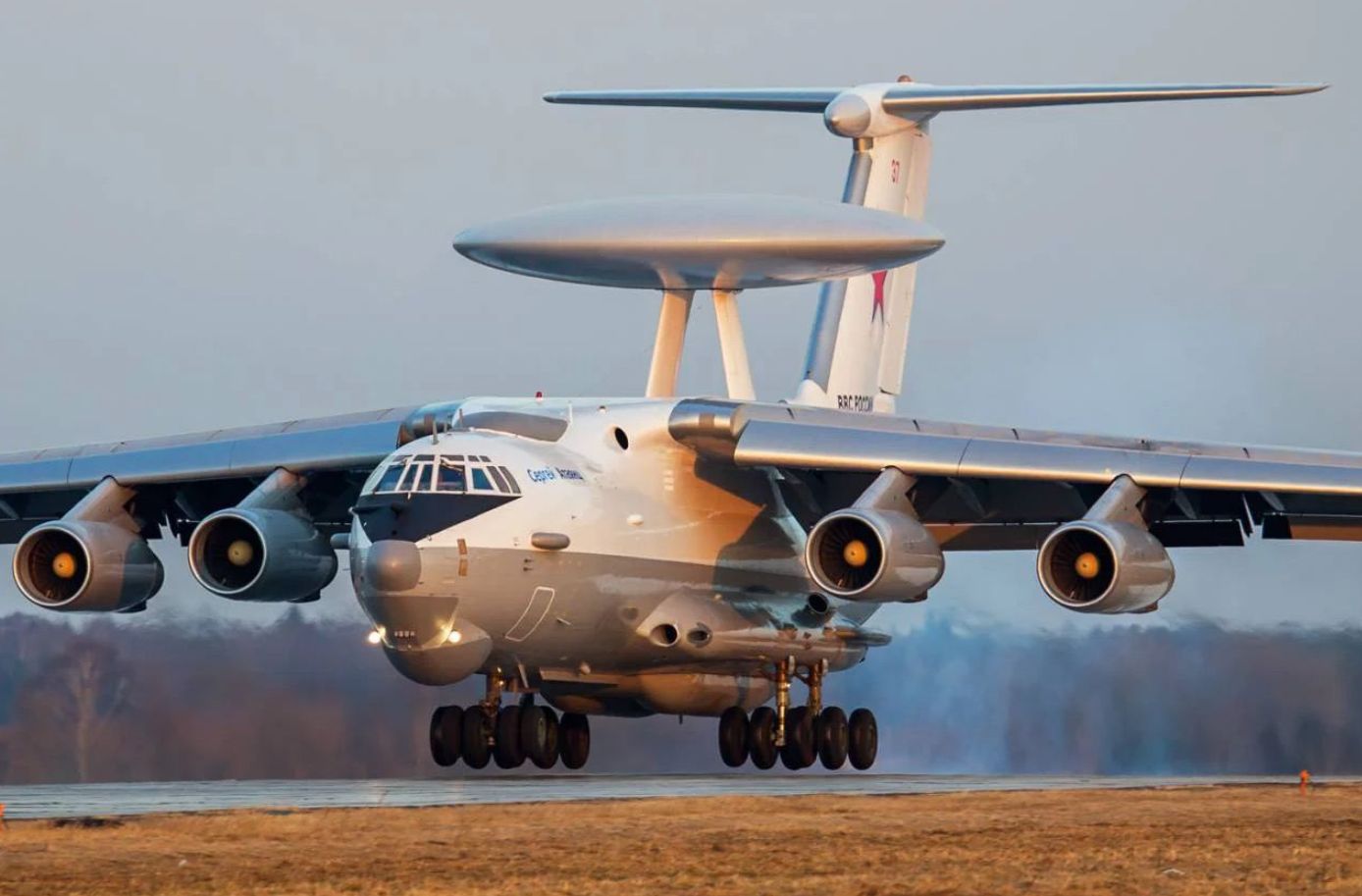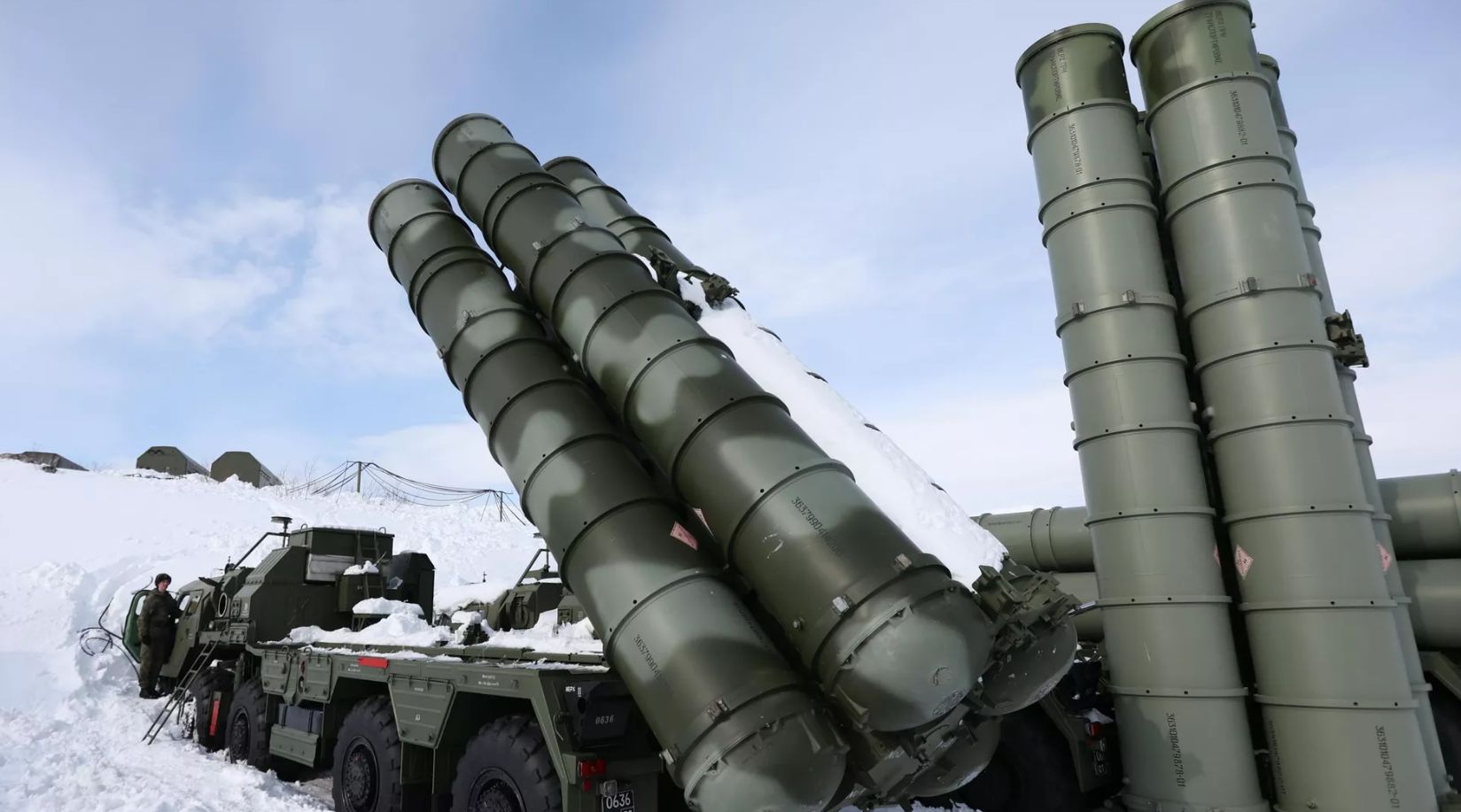Accidental fratricide (or friendly fire) is being considered as one of the possibilities behind the shootdown of the Russian A-50U Airborne Early Warning and Control System (AWACS) aircraft near the Sea of Azov on February 23.
This is the second reported loss of the A-50U after one was shot down in mid-January over the same region and the third such loss of the aircraft in the entire war. Russia has long been deficient in AWACS platforms and is now getting critically short of ‘radar planes.’
Russian military bloggers (or ‘milbloggers’ as they are popularly known) on Telegram, with close ties to the Kremlin, have speculated a combination of new Ukrainian tactics to overwhelm Russian air defense and AWACS crew.
The Shootdown & Video
Ukraine maintains that the shootdown was a result of a joint operation conducted by the Armed Forces of Ukraine (AFU) and its Main Directorate of Intelligence (GUR). The Ukrainian Air Force and the Ukrainian Defense Forces have separately claimed on X (formerly Twitter) that they destroyed an “A-50 long-range radar detection and control aircraft worth $330 million.” They also released maps showing the approximate location of the shootdown.
Videos on social media showed the aircraft flying low and firing flares. At one point, a larger explosion is seen several meters behind the supposed aircraft (or behind the trajectory/heading of the columns of flares being released). This can be inferred to be a moment where the unidentified air defense missile hits one such flare.
Flares are used to divert incoming anti-air missiles by producing a larger heat signature than that of the aircraft for their infrared (IR) seekers to lock on to. Shortly after, a larger explosion produces a big fireball, indicating the plane has been hit. The inferno continues descending, leaving behind a trail of uneven fire, suggesting it is the burning debris of the A-50U.
A part of the debris also breaks off and produces a separate contrail while descending down, meaning it was a plane now breaking apart while hurtling toward the ground. The video, however, shows the action against the night sky, with no visual confirmation of either the missiles or the aircraft.
It does, however, clarify that the aircraft was flying at a low altitude, around 1,000 feet, and had detected the missile and was undertaking evasive maneuvers.
This means the crew weren’t completely taken by surprise. This allays any questions on the basic tactical proficiency and compliance with Standard Operating Procedures (SOP) upon being ‘painted’ by enemy radars or missiles.
Ukraine Had Eyes Set on A-50 & S-400?
Examining the friendly fire theory would require a cursory look at how the A-50U AWACS and the S-400 SAM worked in conjunction to shoot down many Ukrainian aircraft.
EurAsian Times had reported how Russia claimed to have shot down 24 Ukrainian aircraft in five days of mid-October alone by coordinating the targeting and tracking roles for the S-400’s missiles between its own and the A-50U’s radar.

Russian Ministry of Defense (RuMoD) officials said at the time that the pairing allowed for the S-400’s missiles to fly and hit Ukrainian aircraft at the “maximum range” and hit aerial targets at an altitude of approximately 1,000 meters. The missile in question could be the 40N6 missile that can fly to 400 km.
A December 2023 EurAsian Times analysis then noted how Russian planners are hoping the 40N6 would also shoot down F-16 fighters that Ukraine is expected to receive soon. This possible tactic would also involve the same S400-A50 fusion.
But prior to that, late in October, Ukraine was also observed to have been specifically targeting the S-400, claiming to have destroyed three to four launchers in and around the Lugansk region. Our analysis noted how this was a concerted Ukrainian attempt to destroy S-400s by “trying varying tactics, overloading air defense and distracting raids from different sides.”
Then came the January 14 shootdown of the A-50U by another unidentified Ukrainian air defense missile. This was the second A-50 to have been lost, with the first one damaged on the ground by a Ukrainian loitering munition in February 2023 at the Machulishchy air base in Belarus.
Friendly Fire?
The tactical situation Russian observers describe while examining the friendly fire theory is similar to the anti-S400 tactics Ukraine employed. Rybar, a leading Kremlin-affiliated military analysis forum, said the “Russian air defense crew may have been misled by enemy missiles, leading to accidental targeting of the A-50U.”
“It is impossible to rule out the deliberate launch of anti-aircraft missiles by the enemy (such as a modified S-200 Vega) towards our aircraft to provoke Russian air defense into returning fire,” Rybar added. The Russian air defense crew “mistakenly identified the A-50U as an enemy target and engaged it,” adding that there have been “past cases of misidentification.”
Perennially poor “coordination between air defense and various types of aviation” has been one of the reasons that has led up to this situation. ‘Fighter-Bomber,’ another leading Telegram channel, said in the context of the Su-34 Ukraine claimed to have recently been shot down. Ukraine “pours missiles of all types both in the air and on the ground simply in the hope of results.”
This “complicates the air situation as much as possible,” where the aircrews of the Russian aircraft “maneuver, turning deeper into (Russian territory).” “Then our air defense wakes up and begins to kill both of them.”
“Fighters are (also) very helpful, (as) they see both missiles and aircraft and tell the crews the direction of attack and the range to the missile. And the crews are already performing anti-missile maneuvers. This has actually saved a bunch of aircraft,” Fighter-Bomber (FB) added.
From “fighters,” it is not clear if FB means other airborne jets or ground troops that have electronically detected or visually spotted a launch of a Ukrainian AD missile, before which they inform the S-400 or A-50U crew.

Conclusion
It is evident from FG and Rybar’s candid admissions that Ukraine had tried this tactic before and possibly did not succeed until this time. The shootdowns of the three Su-34s in December and the A-50U in January must have spurred a stringent revision of tactics and workarounds.
For one, it must have also revealed the location of a particular Patriot PAC-3 missile battery to Russia that it must have been tracking, forcing Ukraine to restrict its battlefield movements.
On February 23, the RuMoD released overhead drone footage of a strike that claimed to have destroyed “one launcher, one tractor, one ammunition and transport-loading vehicle of the US-made Patriot anti-aircraft missile system.”
This explains Rybar’s inference that Ukraine used the Soviet-made 1960s-era S-200 SAM ( NATO Name: SA-5Gammon ) – that Ukraine also apparently tweaked to strike land targets in July last year. Lastly, the hits on the S-400 and the degrading of Russia’s AWACS fleet also precede the imminent arrival of F-16s on the Ukrainian battlefield, which, as mentioned previously, are two of the biggest threats to the fighter.
Whether intentional or not, Ukraine is clearing the coast for the F-16s, and Russia’s job has gotten a whole lot trickier. Loss of AWACS means a serious threat to its best warplanes, like the Su-35, and disaster for other jets.
- The author can be reached at satamp@gmail.com
- Follow EurAsian Times on Google News




